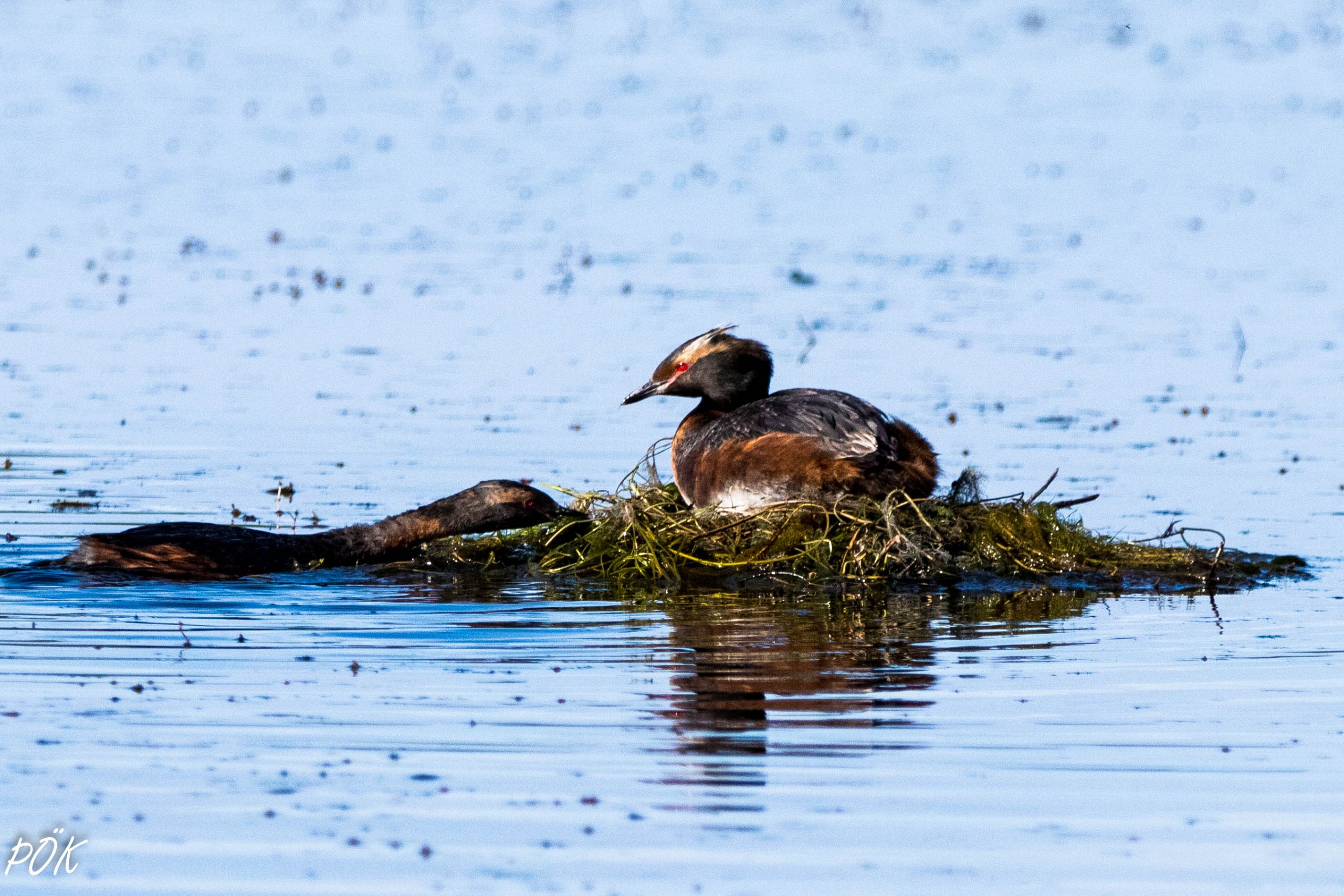The horned grebe, also known as Slavonian grebe (Podiceps auritus), belongs to the Podicipedidae family along with 20 other species belonging to six genera and is the only grebe species found in Iceland. The horned grebe is distributed in Scandinavia and the Baltic, east to Asia and North America. Few breeding pairs have been observed in Scotland. The Icelandic horned grebe is mostly migratory, spending winter in Great Britain and France. However, part of the population stays at the Icelandic shore.
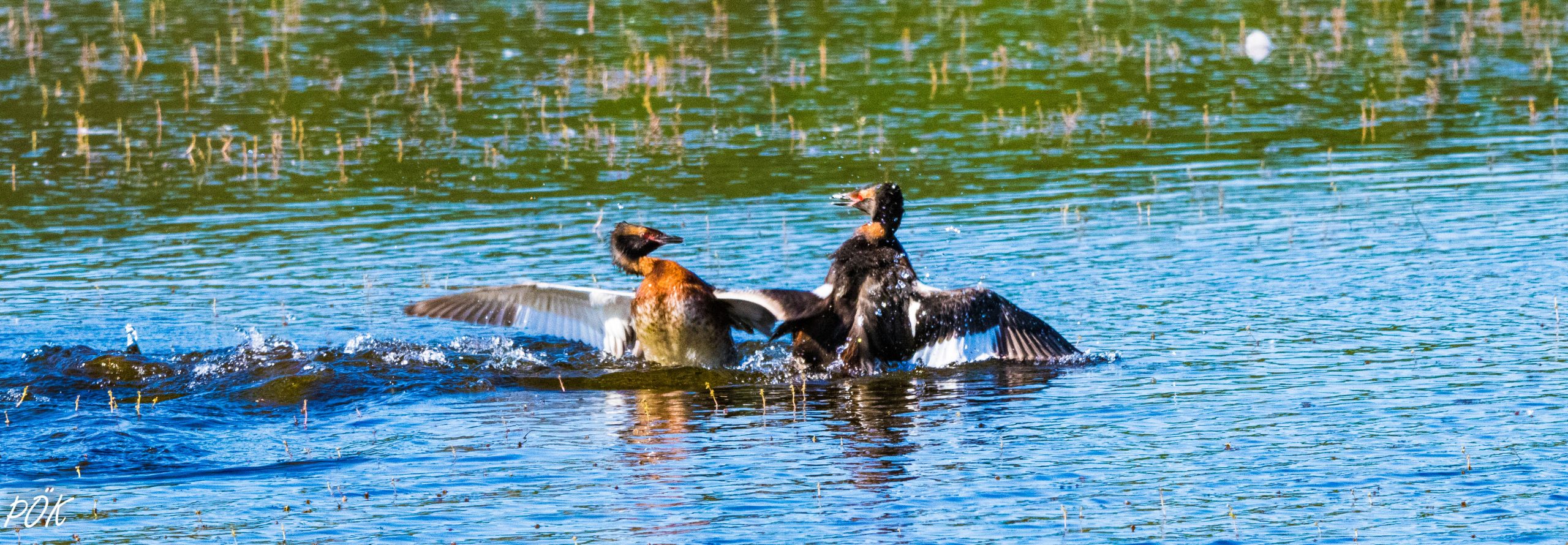
An adult horned grebe in summer plumage is a graceful sight.
The belly is white, sides and throat rusty brown but back and neck dark and shiny. The head is decorative with chins and forehead black, but bright orange “feather-horns “are all the way from the eyes to the neck. The eyes are noticeable red with yellow lenses. The bill is pointy and dark, and the feet are blue-gray having broad lopes on the toes, a characteristic of the Podicipedidae family. The horned grebe weighs about 40 oz, and the length is 11.8-15.8 in. The male is slightly larger than the female; otherwise, the sexes are indistinguishable.
The young are grayish colored, and the head has noticeable black stripes and three featherless pink spots, close to the eyes and on the forehead. The winter plumage is grayish colored, brighter below but darker above.
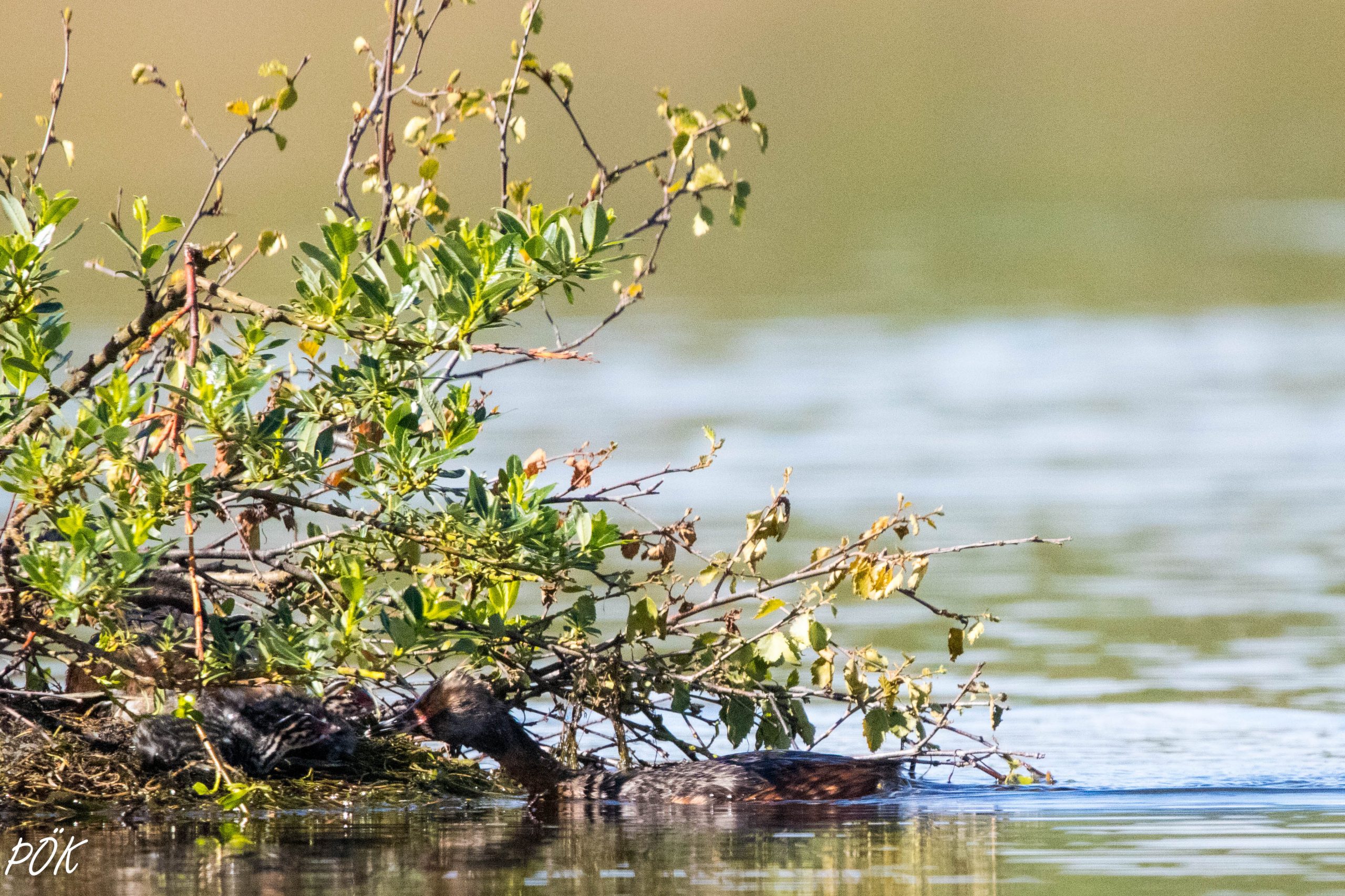
The population has been increasing after a collapse
Back in the days, the horned grebe was endemic all around Iceland except in the Westfjords. The population collapsed around 1950, and as the main reasons were considered the introduction of mink (Mustela vison) along with drainage of wetlands for farming. The horned grebe was most common around lake Mývatn and the whole Icelandic population was estimated 300 pairs when it reached the minimum. After 1990 the population has been growing, and today it is expected to be about 1000 breeding pairs. Lake Mývatn is still the most important habitat, but Skagafjörður, Öxarfjörður, and Úthérað follow. For the last five years, the horned grebe has been occupying the old nesting grounds around Reykjavík and is now observed widely for bird watchers to enjoy.
Courtship of the horned grebe is complicated
At the beginning of April, the horned grebe arrives in its summer plumage to the nesting grounds, a shallow lake, or a pond rich of vegetation. The courtship is long and complicated. The pairs dive and dance on the water surface with weed in their bills called the weed ceremony. This behavior is followed by splashing and grooming which is fascinating to watch.
The pairs pile up vegetation to build a large floating nest, where the female lays 3-6 eggs. The eggs have a soft shell that quicky gets colour from the nesting material and become brown. The nesting period is from the middle of May to late June, and the incubation period is 22-25 days. Both sexes incubate and care for the young. Each pair has its own territory on the lake, which is the feeding ground and is aggressively defended against intruders.
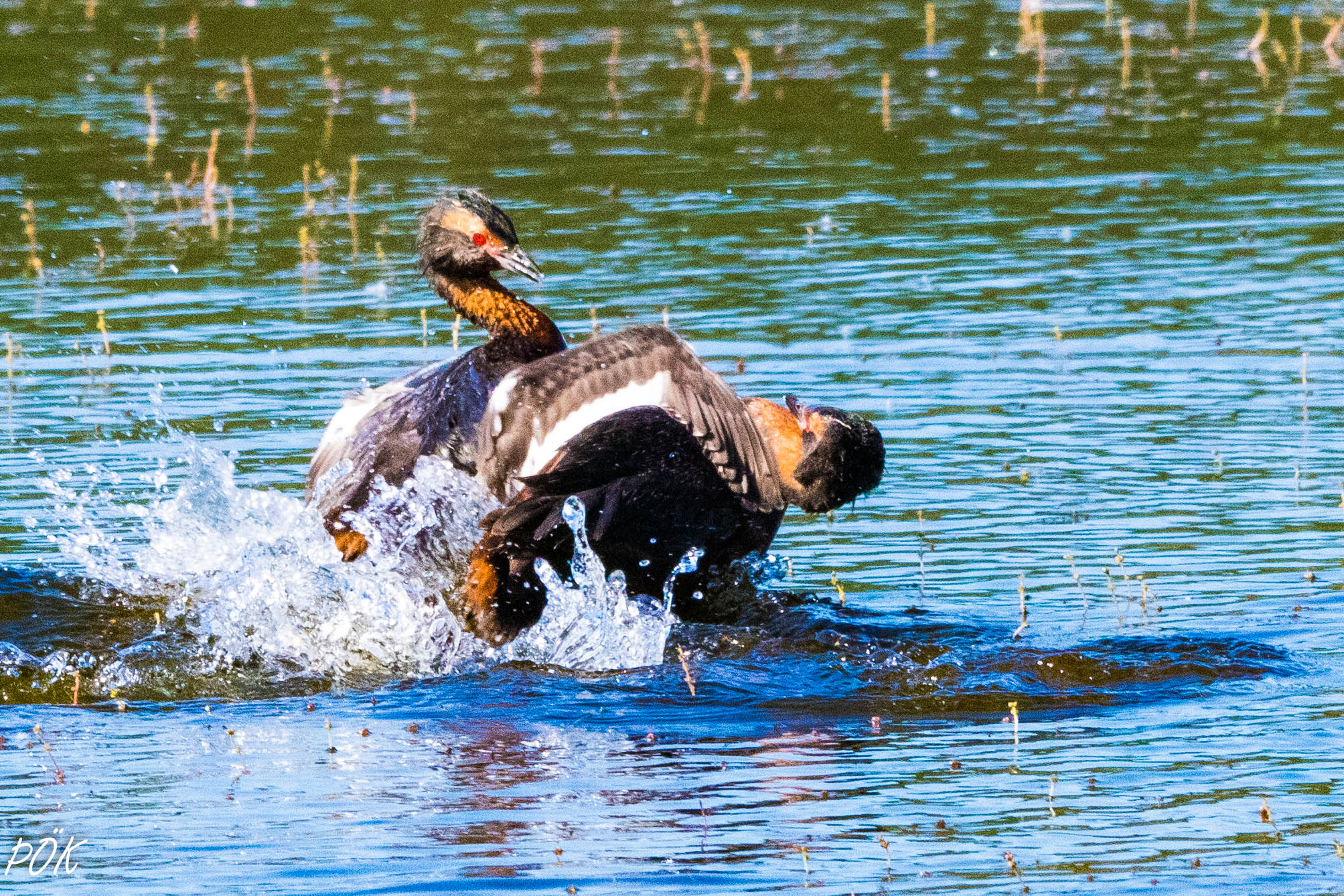
Caring for the young and diet
The young stay at the nest the first days where the parents bring them food. The main food items are insects from the lake. Small fish, mostly sticklebacks (Gasterosteus aculeatus), quickly become their preferred meal. The horned grebe also eats its own feathers thought to improve the digestion.
The youngs start to swim and dive a few days old. They follow their parents around the territory, often on their backs, but the family rests in the nest. The family stays together until the young can fly, taking about two months, then leave the nesting ground and head to sea. During the winter, the horned grebe stays close to shores and feeds on invertebrates and small fish. They become sexually mature 2-3 years old and start looking for a suitable nesting site.
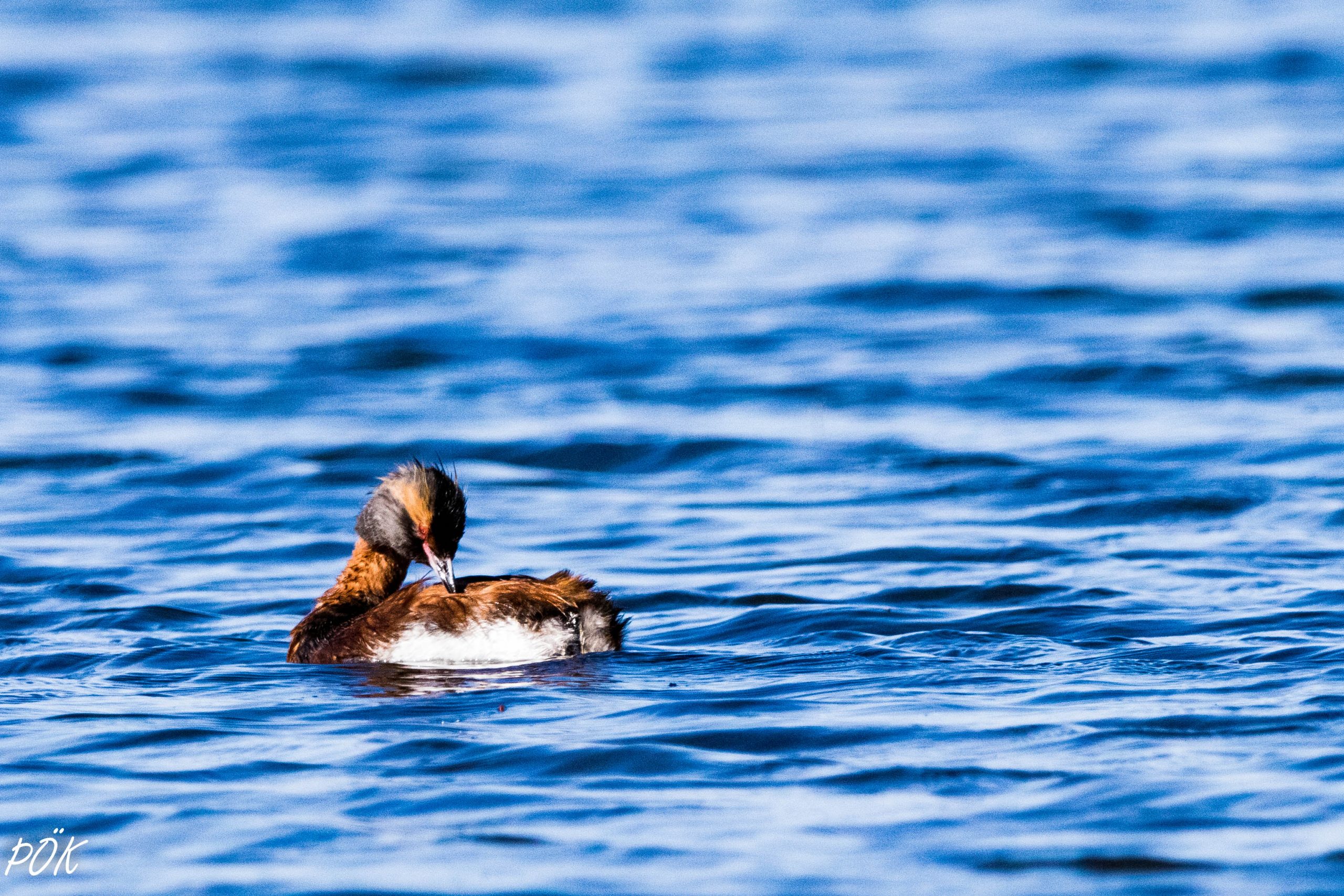
The horned grebe prefers to build its nest attached to tree branches or roots.
It is possible to assist the horned grebe when it’s looking for a suitable nesting site. Then tree branches are placed on the water to form a small bush that attracts the birds. This method has given good results at the lakes Vífilsstaðavatn and Elliðavatn, where a few horned grebe pairs nest in manmade nesting sites.
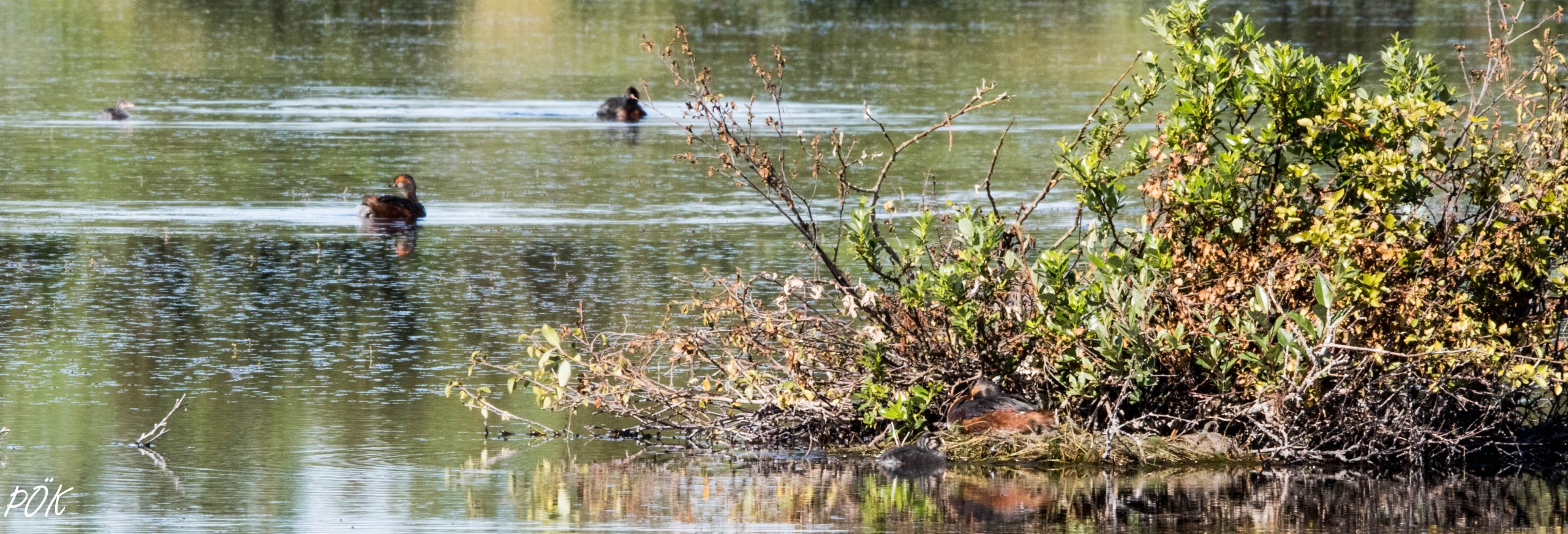
Did you know?
- The horned grebe has been called many names as the Slavonian grebe, devil-diver, and the water witch.
- Grebes are the only birds eating their own feathers. The reason for this is unclear, but it probably helps the digestion.
- The youngs travel and rest on the adult’s back, an unknown behavior of other bird species.
- The horned grebe does not have webbed feet as waterfowl, but the toes have large lobes for swimming and diving.
- The floating nest of the horned grebe is unique in Icelandic bird fauna, a strange phenomenon of vegetation floating on the water surface.
Links to float in:
More info on All About Birds
Great facts from the National Audubon Society
Detailed descriptions and more pictures on the Animal Diversity Web
Mystery bird: horned grebe by The Guardian
Learn more about Icelandic birds in our article section
Icelandic Version – Íslenska
Author: Dr. Þórður Örn Kristjánsson
Photographer: Dr. Þórður Örn Kristjánsson

